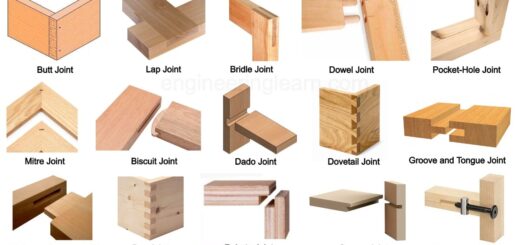23 Types of Axes – Types of Axe Heads and Their Uses [Explained with Pictures]
![23 Types of Axes - Types of Axe Heads and Their Uses [Explained with Pictures]](https://engineeringlearn.com/wp-content/uploads/2022/01/Axes-1024x539.jpg)
Types of Axes – Types of Axe Heads and Their Uses [Explained with Pictures] :-
How to Axe Head Restore?
Different Types of Axes
1. Tactical Axe: ( Types of Axes )
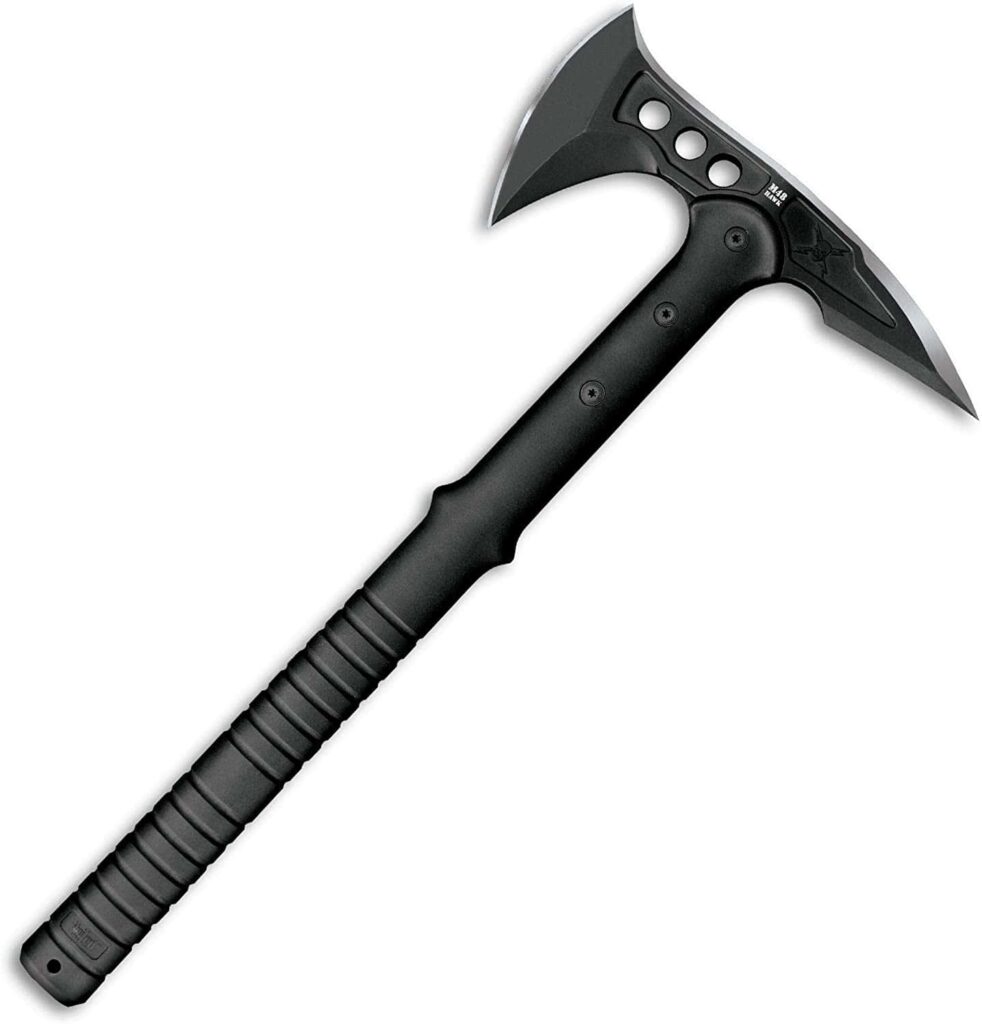
The tactical axe is referred to as an advanced development, which is something of a multi-device. Likewise normally known as a strategic hatchet, this hatchet has acquired notoriety among policemen, warriors, and safety crew, just as survivalists. The essential utilization of this hatchet is hacking, however it can likewise work as a short proximity weapon, a digging tool, a pry bar, and a sledge. It’s great for setting up camp excursions, as it can assist with cooking, hacking wood for open air fires, and burrowing openings. These tomahawks are by and large produced using steel so they have the solidarity to adapt to a huge number of errands.
2. Grub Axe: ( Types of Axes )
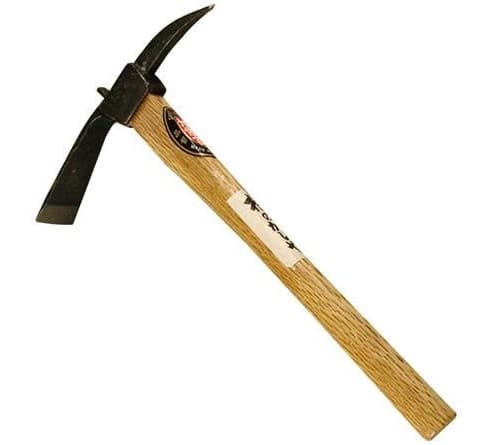
Grub axe is referred to as that axe which is also named as a cutter mattock. A grub axe is referred to as the one which is found having a head with an axe on one side and an adze on the other side. The blade of the axe will be vertical, while the blade of the adze, which is the longer of the two, will be horizontal. The term ‘grub axe’ refers to the tool’s ability to grubbing in compacted soils and rugged terrain. These tools are in handy in the garden since they can dig holes for new plants or break up the roots of existing ones that are resistant to digging.
3. Felling Axe: ( Types of Axes )
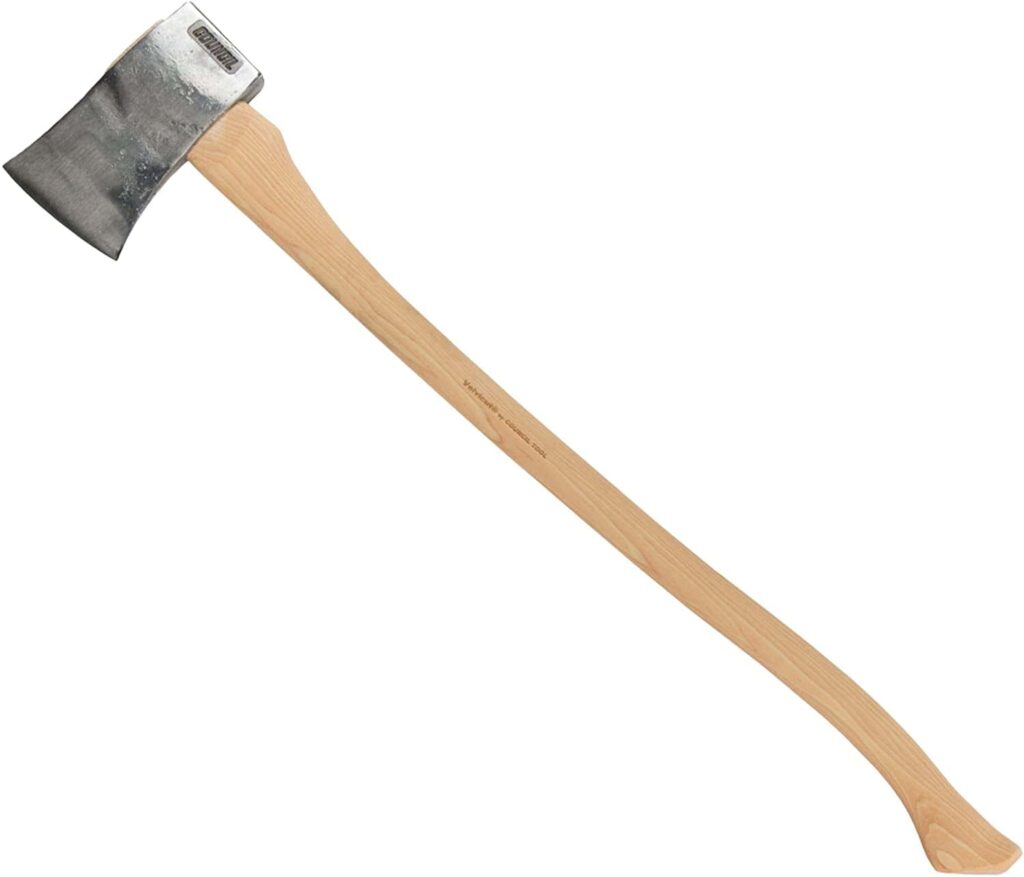
These axes are explicitly intended for felling trees and cleaving logs of wood. The top surface of a felling hatchet or felling axe is found weighing somewhere within the range of either 2 or four pounds which sits toward it in order the complete the long handle. This long handle empowers the client to deliver an all the more remarkable swing with more prominent influence, making for a superior cut. Customarily the handles are produced using hickory wood, which is solid. The grain of the hickory ought to follow the handle length ways and bend alongside it, for unrivaled strength.
The edge of a felling hatchet has an erupted shape and a sharp and slim tip. These are intended to cut contrary to what would be expected of the wood, so while felling a tree, it ought to be swung sideways at the tree trunk. Felling tomahawks are brilliant for their expected utilization of felling little trees and branches, and they cleave well; nonetheless, they are not great for parting as their sharp edges will quite often stall out in the wood.
4. Forest Axe: ( Types of Axes )
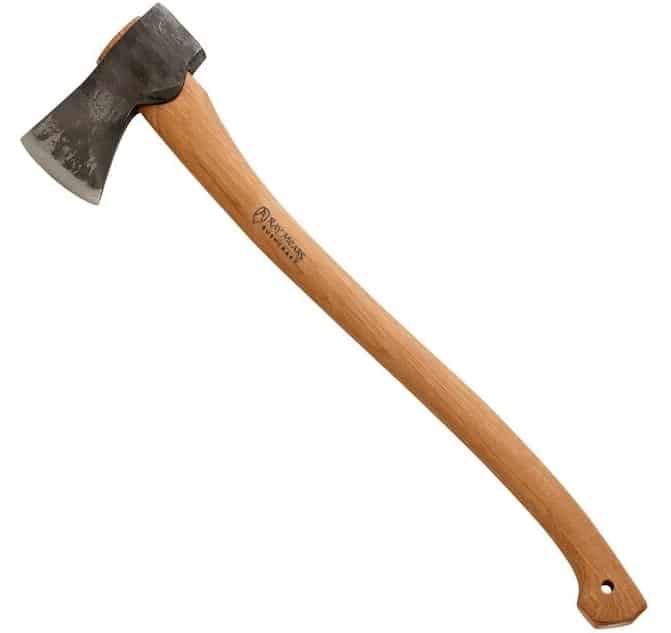
Forest axes are referred to as the axes which are designed as the heavy-duty and are used for the purpose of falling trees. They’re heavy-duty tools that would be difficult to transport on camping trips, but they’d be ideal for storing permanently at a cabin in the woods. These axes are designed to hack down really massive trees and have extra long handles. The blade of a forest axe will be sharp and flared, with a slightly curved tip.
5. Hudson Bay Axe: ( Types of Axes )
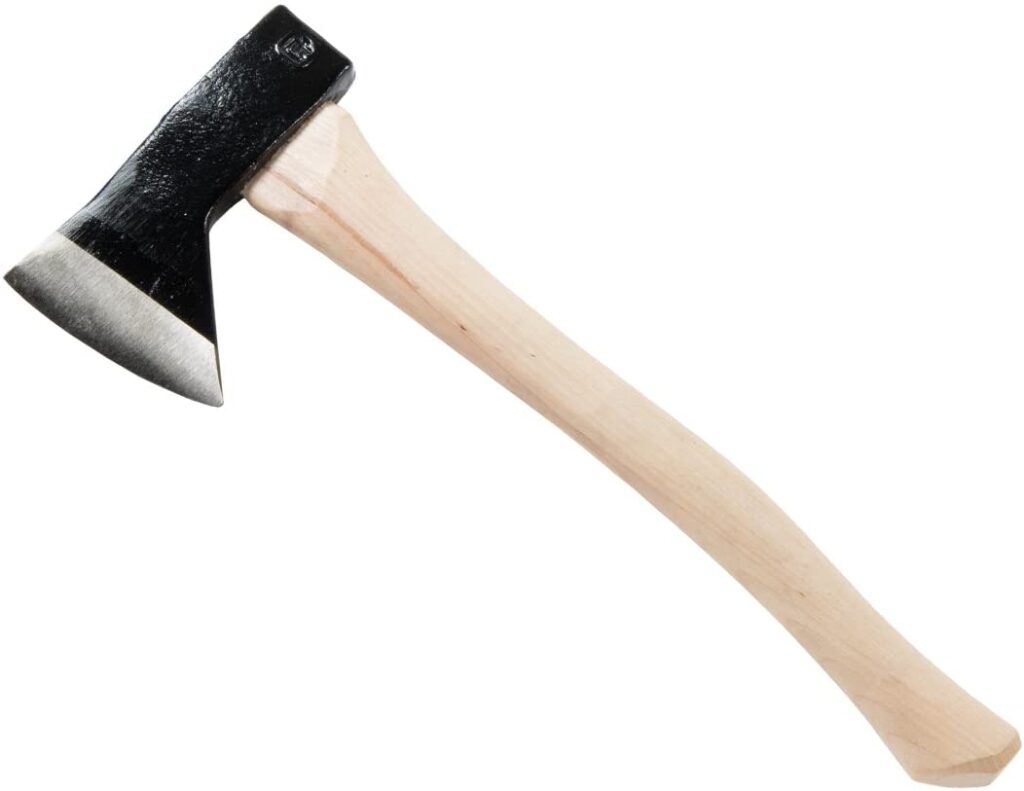
This kind of medium-sized hatchet was planned by Canadian hide catchers. These are the axe which are found being utilized for cleave kindling at the stretched out outings specifically to the cool north, as well as these are moreover generally used hatchets for various applications in the further regions. Size-wise, it is in the middle of that of an axe and a standard felling hatchet. It tends to be utilized with one hand or with both, and is really great for more modest cleaving and dividing occupations. It will not be a lot of utilization on bigger trees, yet its size makes it more sensible to setting up camp excursions.
6. Hatchet: ( Types of Axes )
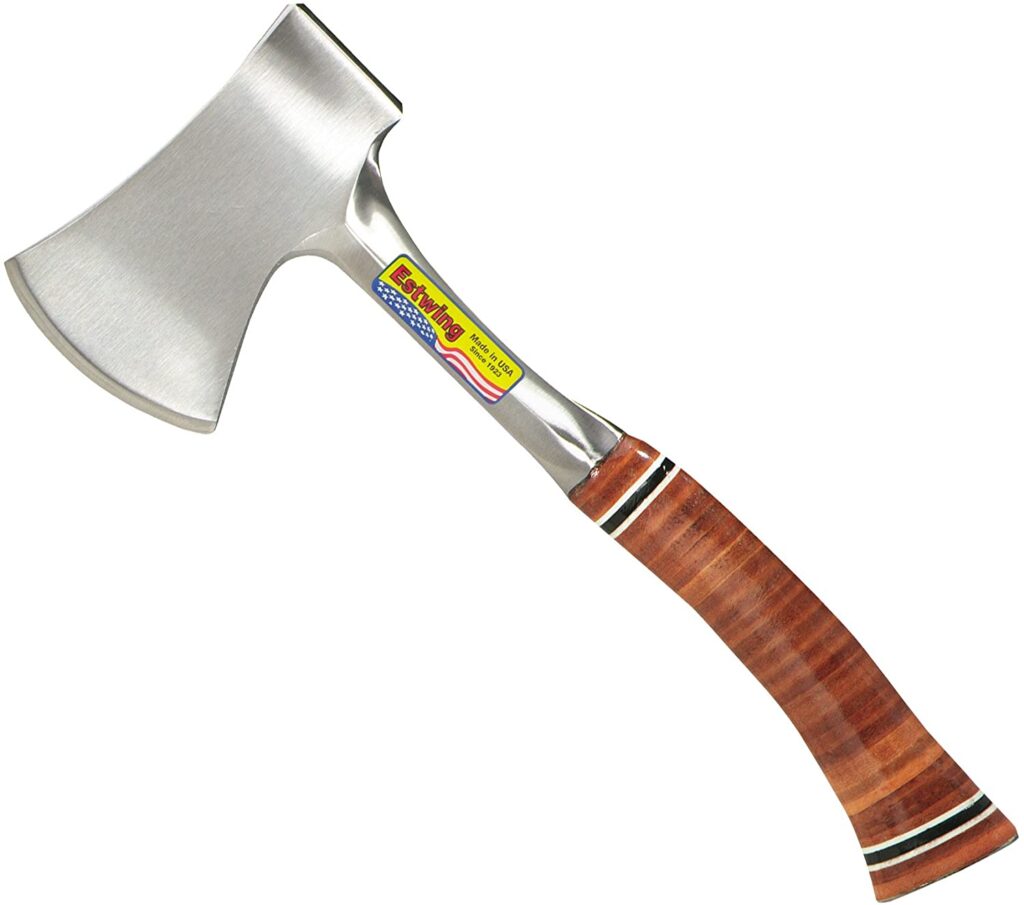
A hatchet is a general all-purpose axe that most individuals have in their toolbox for minor yard work. These can cost anything from a few rupees to more than 100 dollars at times. The hatchets are found having a hefty handle which is usually made of the hickory wood and are found to be tiny in shape as well as dimension as compared to the other axes. The head is heavy, with a flared design that leads to a blade with a sharp tip. For a decent hatchet, balance is crucial, as a balanced feel will aid in producing more accurate swings and cuts, making jobs go much faster and easier. A hatchet is used for chopping and splitting wood as well as felling small trees.
7. Splitting Maul: ( Types of Axes )
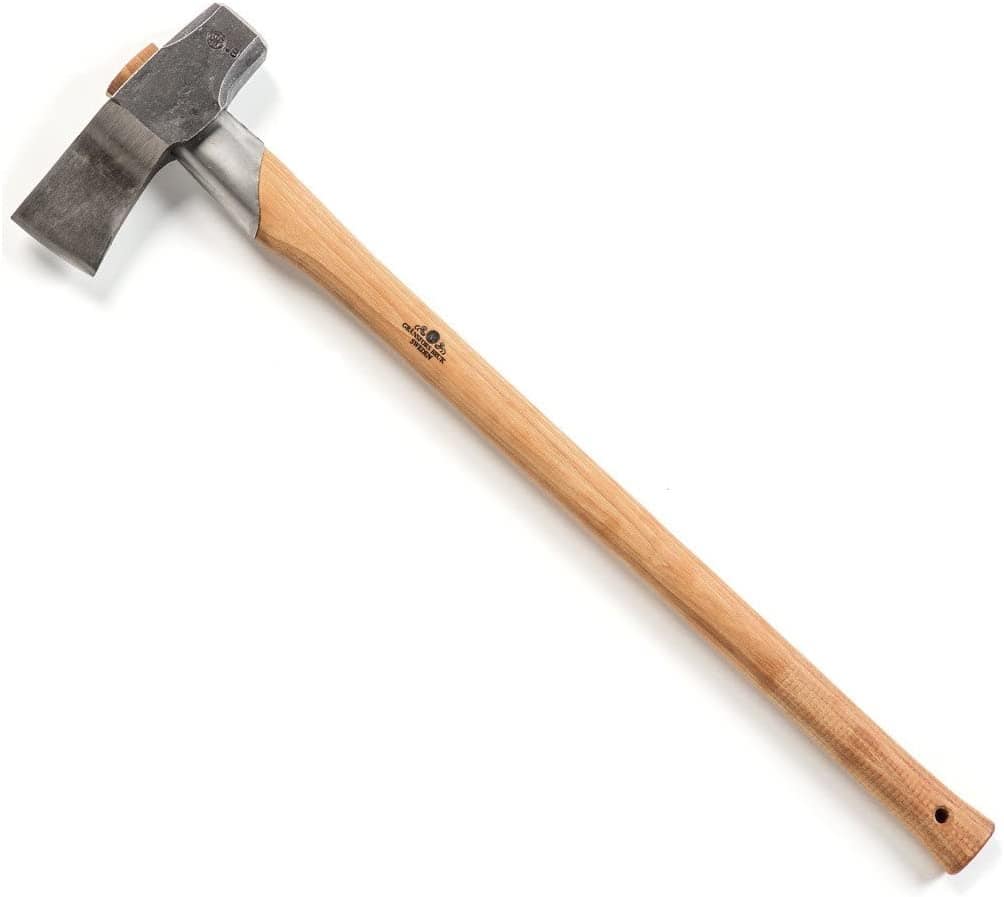
These tomahawks are explicitly intended for dividing signs into fuel. They have a plan basically the same as a felling hatchet, with a long wooden handle to give a decent swing. When utilizing a parting hammer, you should utilize a descending swing, not a sideways swing like that utilized for a felling hatchet. Not at all like felling tomahawks, what cut contrary to what would be expected of the wood, dividing hammers cut with the grain, which brings about split wood rather than hacked wood. The top of a parting hammer will be a lot heavier than a felling hatchet, at around eight pounds.
The head is shaped like a hefty wedge, with one sharp end and one blunt end. The sharp end doesn’t have to be especially sharp to be practical, as the form and weight of the blade will do the most of the work. As a result, splitting mauls require far less sharpening than other axes and can function effectively even when dull.
8. Broad Axe: ( Types of Axes )
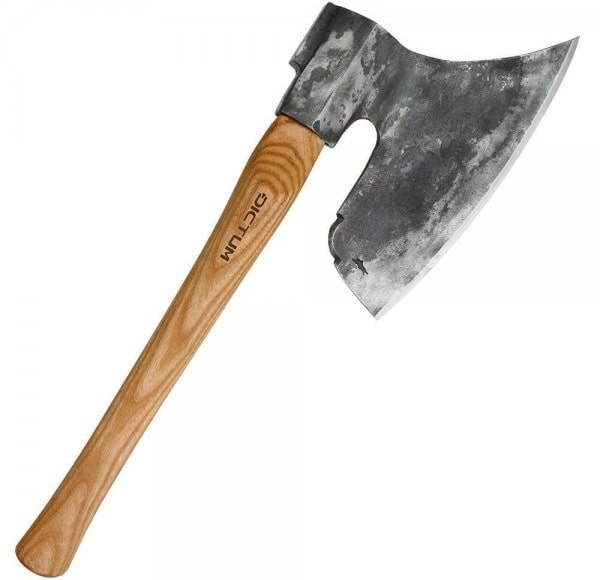
A wide hatchet is additionally normally known as a cutting hatchet, on the grounds that its main role is slashing, which is the most common way of transforming round-edged wood into level edged lumber. This is a sort of carpentry that was ordinarily utilized before modern sawmills appeared. To work with the slashing system, one side of this hatchet is level, while different has a wide sloped edged cutting edge for hacking. It is a medium-sized hand instrument which is currently regularly utilized via woodworkers, and seldom found in everyday use.
9. Carpenter’s Axe: ( Types of Axes )

A carpenter’s axe or a woodworker’s hatchet is an expert device which is intended for fine carpentry and isn’t great for general felling or hacking occupations. This is a little hatchet, likewise here and there known as a woodworker’s axe, however it is marginally greater than a standard axe. Customarily, this kind of hatchet would have an exceptionally straight-edged sharp edge with a level butt, which would bend over as a sledge.
The sharp edge of a craftsman’s hatchet is significant while choosing one to use, as a straighter edge is an indication of a more excellent hatchet which will make a superior and more exact cut. Current craftsman’s tomahawks likewise have the expansion of a score in them, which can be utilized to eliminate nails from wood. In addition to this these are the ones which are commonly found having an indent at the handle, which is usually found being considered as a superior hold so that the client can have more exact control at it.
10. Miner’s Axe: ( Types of Axes )
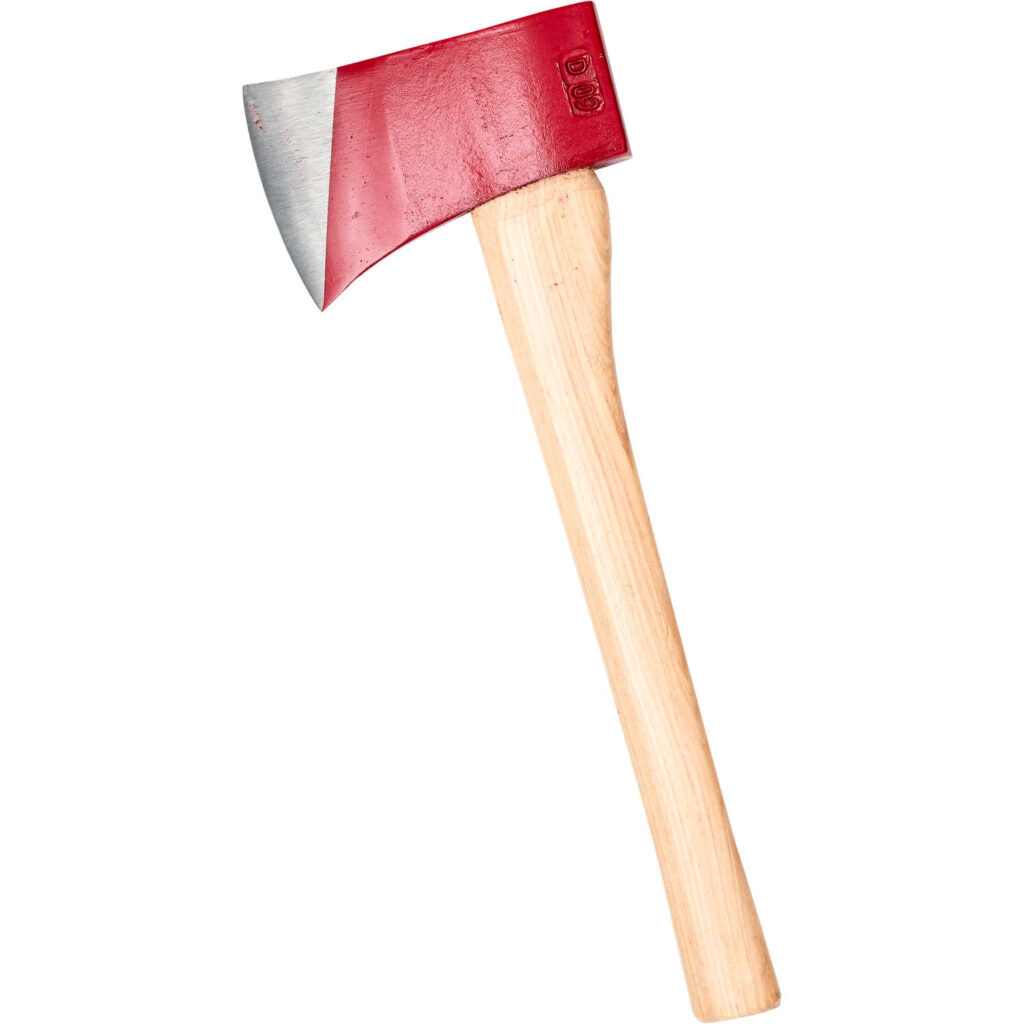
This axe was first used by miners in Europe during the Middle Ages while they were looking for copper and silver ore. These axes have a small handle and a long head, making them perfect for close quarters work. Over the decades, these axes became a prestige symbol among miners, and the head of the axe may feature highly carved etching.
11. Double Bit Axe: ( Types of Axes )
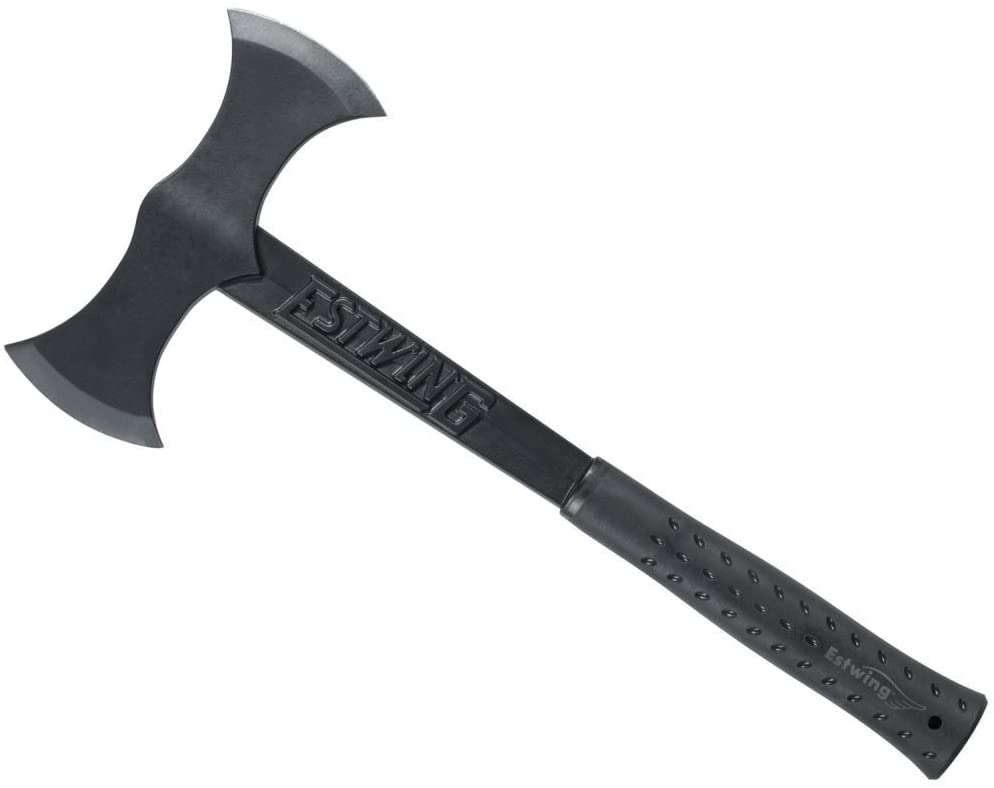
The double bit axe is referred to as that hatchet which is found having two sharp edges, either in the form of one on one or the other side of the head. These will normally be balanced from the front, yet one edge will dull while the other is sharp. The sharp side would be utilized to cleave wood or fell trees, and the dull side used to part the wood into little bits of fuel prepared for the fire. These sorts of tomahawks are not in standard creation any longer and are currently just utilized by loggers.
The twofold head makes them very bulky to convey, just as being exceptionally weighty. Many individuals don’t really want to involve them as the additional load of the additional head implies the client will wear out when utilizing it more rapidly than expected. Notwithstanding, the upside of the twofold piece hatchet is that it basically is two tomahawks in one, saving you from having two separate tomahawks.
12. Viking Axe: ( Types of Axes )
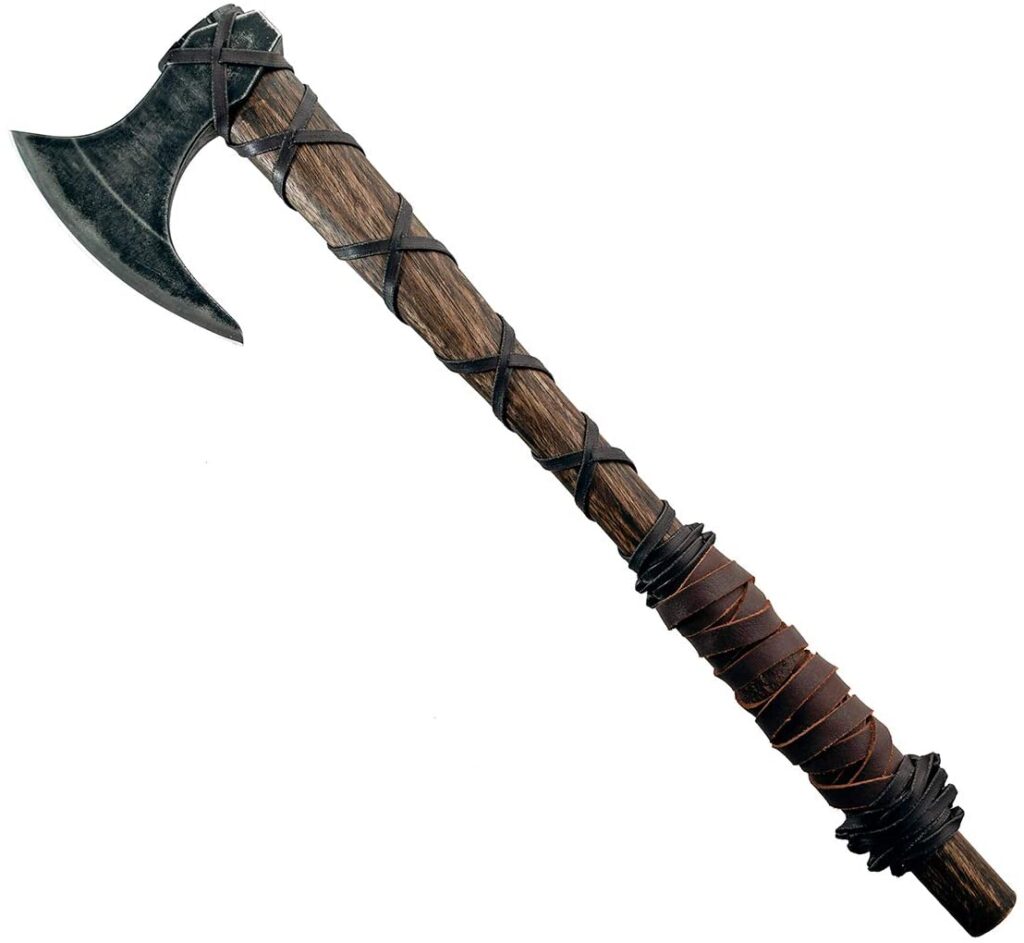
Viking axe is referred to as that axe which is found being utilized all through the Viking Age as fight weapons. However the facts confirm that numerous Viking tomahawks were enormous, you’d be inappropriate to accept they were brutish and unwieldy. Very much made Viking tomahawks were outstandingly even and could weigh under two pounds, making them light to convey during fight, and quick to utilize. The size of these tomahawks shifted enormously, however most were twofold given, with handles being up to 55 inches.
The heads on Viking tomahawks could be shifting shapes, however transcendently they are noted for being vigorously whiskery. This shape was helpful for an assortment of things in fight, for example, snaring a rival’s lower leg to trip them over or snaring their safeguard far removed to deliver them unprotected. The tips of the cutting edge would be unimaginably sharp so they could cut throats like with a blade, and the unpolished butt of a hatchet would likewise be used, typically to hit somebody against the head to cause an embarrassing however not deadly blow. The heads were quite often produced using iron, while the handles were wooden.
13. Tomahawk: ( Types of Axes )
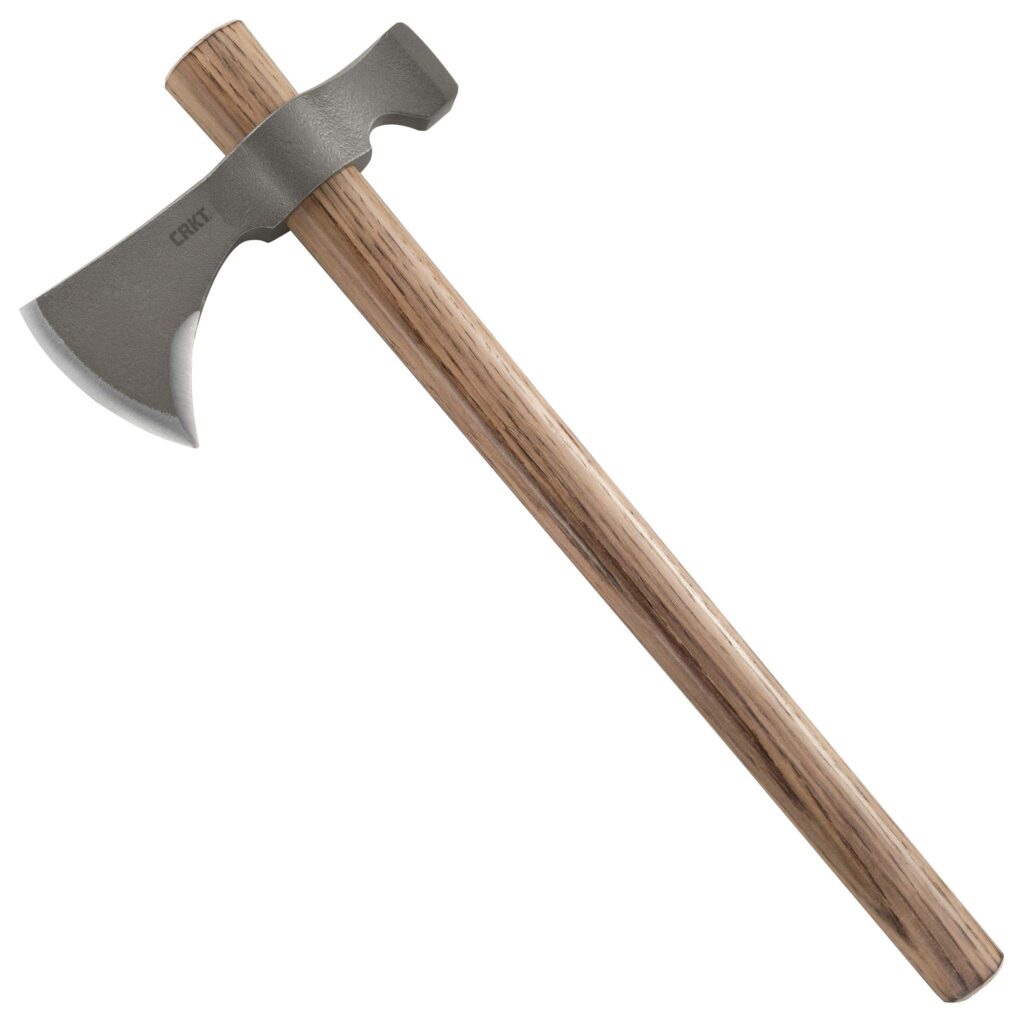
They have a long military history, having been utilised in battle by both sides in the American Revolutionary War and later in the Vietnam War. These axes look like hatchets but have a fully straight handle and are significantly lighter. The straight handle makes it simpler to hurl them at an opponent in combat, and the sharp blade makes them helpful for a variety of tasks such as digging, prying, chopping, and splitting. Tomahawks have recently become fashionable for camping, despite their popularity among military.
They are easy to carry along because they are lighter and smaller than hatchets. They’re multipurpose and can be utilised for a variety of bush craft tasks.
14. Pick Axe: ( Types of Axes )

A pick axe is referred to as a hand apparatus that is formed like a ‘T’ shape. It has a wooden or fiberglass handle with a twofold metal head at the top. Customarily, the two sides of the head would be a pick, however in present day pickaxes, one side of the head will be a sharp pick, and the opposite side is typically an etch. The pick end will some of the time have a bend to it or might be totally straight. A pick axe is a helpful nursery and finishing instrument, utilized for the most part for separating hard soil, shakes, or cement, while the etch is generally used to get into holes between rocks or parts in the earth. An etch likewise fills in as a load to adjust the hatchet, and the additional weight builds the energy of the pick when it is swung.
15. Roofing Axe: ( Types of Axes )
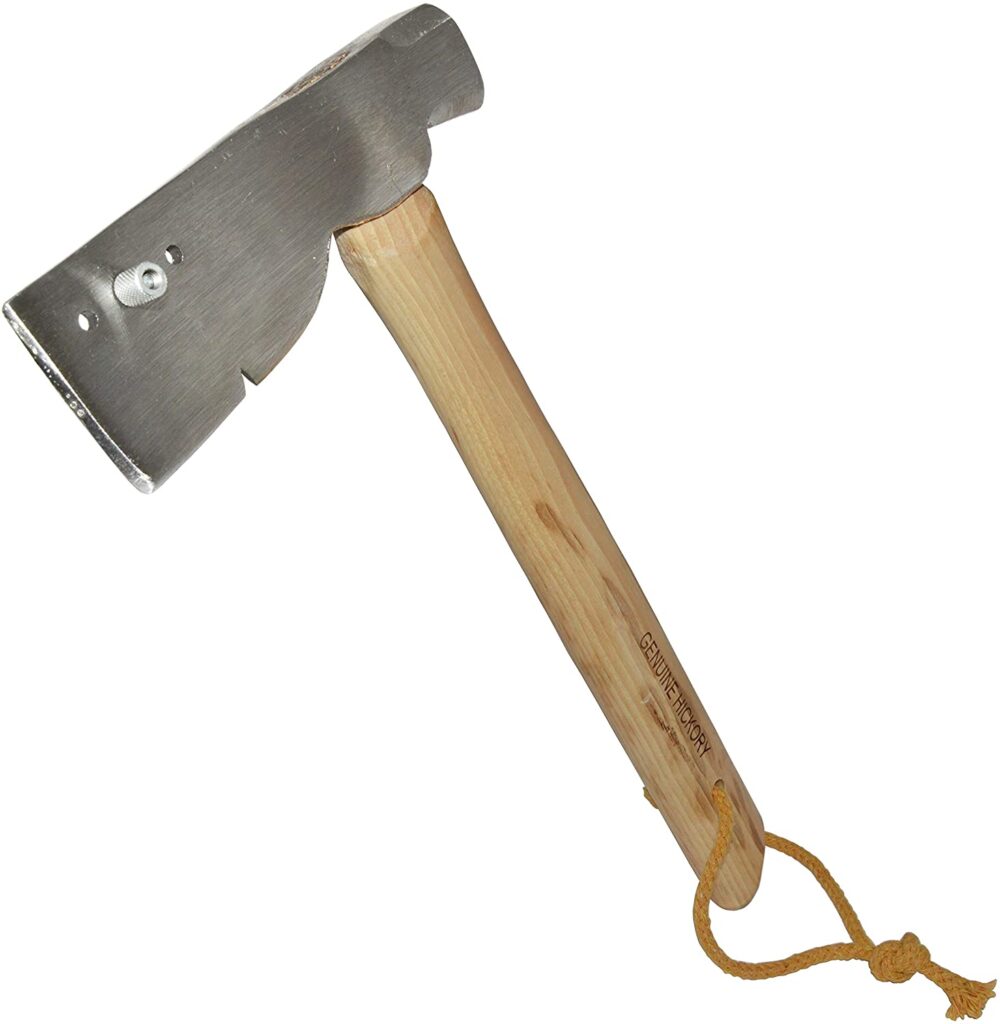
A roofing axe is also referred to as a roofing hatchet which is one of the most high-quality craftsman’s tool that is found being used for the purpose of roofing, and is also found going out for the new developments whereas there are many roofers which are still the same. When you’re sat on top of a roof and don’t want to be lugging around a number of different tools, a roofing axe comes in handy. On either side of the handle, the roofing axe features two heads. One of the heads has a sharp blade for cutting roof shingles.
The other head is a hammer, which is used to pound roofing nails into the roof when installing shingles. Roofing axes also have a node on the sharp blade side, which is a unique characteristic. This node is a shingle gauge that you can use by hooking it over the front face of the shingle below the one you’re setting and hammering upwards. The next shingle should rest against the hammer head, resulting in shingle rows that are equally spaced.
16. Hunter’s Axe: ( Types of Axes )
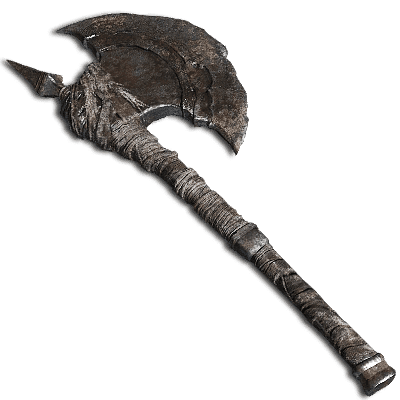
A hunter’s axe is a fundamental instrument which is used for the purpose of tracking, filling the double need of cleaving wood and meat. A decent tracker’s hatchet will have a scored handle, which further develops hold regardless of whether the client’s hands are wet or tacky, be it from downpour or creature blood. A standard hatchet would not function admirably to skin a creature, as the straight survey with sharp corners is probably going to unintentionally harm the creature stow away. By correlation, a tracker’s hatchet has an adjusted ‘excoriate survey,’ which will be more valuable for creature cleaning. This kind of hatchet isn’t generally accessible, and you would have to track down an expert falsifier to purchase a tracker’s hatchet.
17. Throwing Axe: ( Types of Axes )
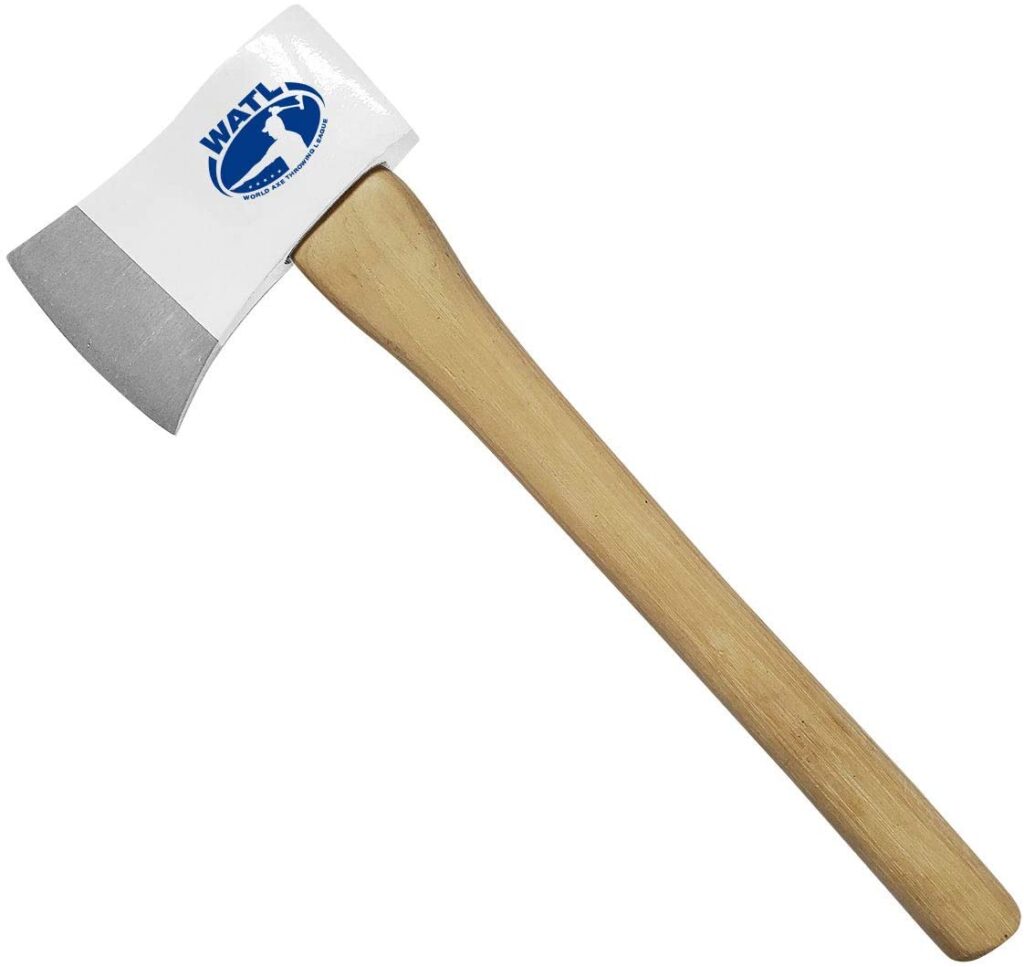
The first tossing hatchet was involved by infantrymen in the medieval times as a weapon in fight, which was tossed at a rival to cause lethal harm. Lately, hatchet tossing has been presented as a serious game that is filling in prevalence. The tomahawks utilized in this game can differ in type and plan, however their fundamental component is that they should be amazingly solid and tough so they can adapt to the strain they are put under from various tosses.
In order to meet the specifications given by the league or federation hosting the sport, the handle of a throwing axe must have a certain length. You can acquire a variety of axes for throwing based on your skill level, such as beginner to intermediate axes or more professional axes for those with more experience. These axes come in a variety of pricing ranges, but the more you spend, the better the axe will be.
18. Crash Axe: ( Types of Axes )
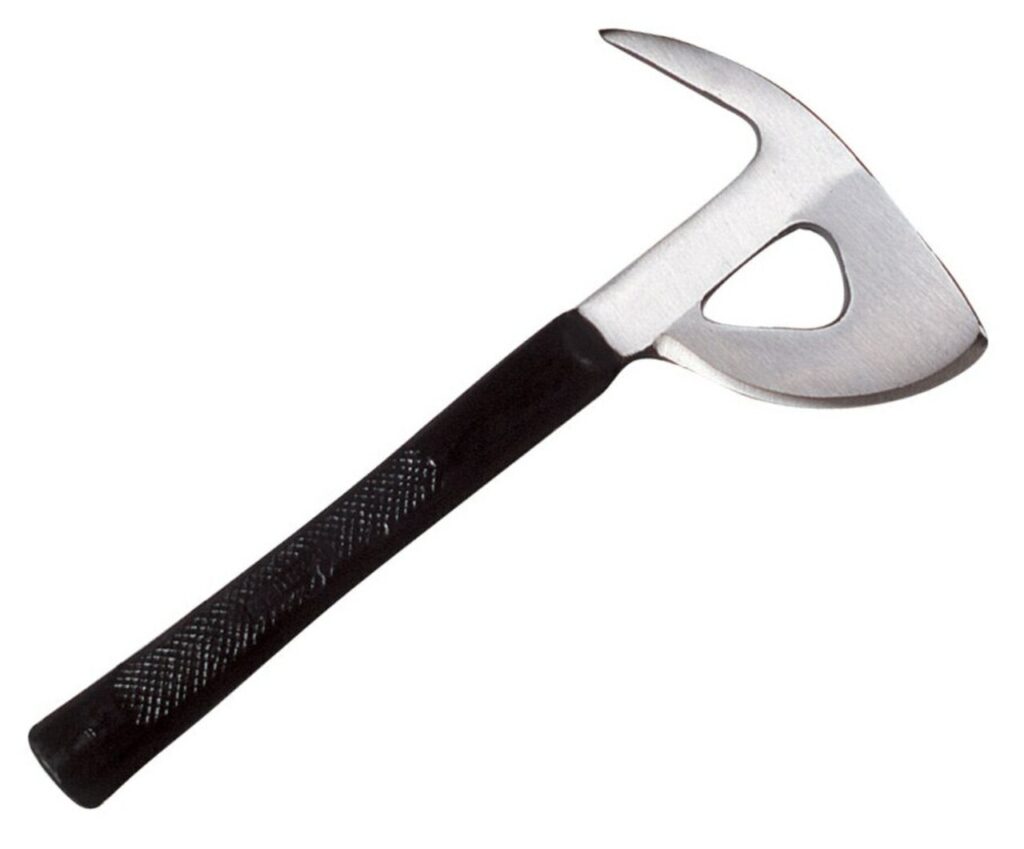
A crash axe is referred to as a crisis device that is regularly found being utilized in the case of an airplane crash landing. These tomahawks are a handheld apparatus with a short handle and an exceptionally sharp smooth, or serrated edge. The cutting edge should have the option to cut through sheet metal to get close enough to the airplane from an external perspective or to cut an opening in the airplane from within to make an exit assuming different ways out are obstructed. An accident hatchet can likewise pry holes open and hack inside dividers and overhead cupboards.
19. Adze: ( Types of Axes )
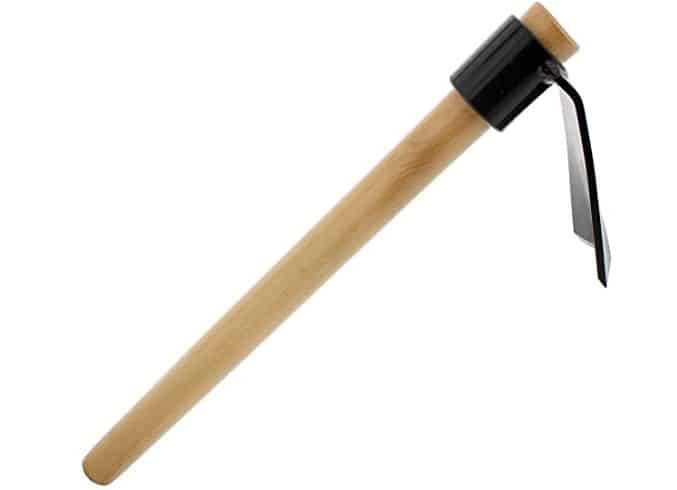
An adze is actually referred to as any hand apparatus which is found having harp cutting edge yet the first adze is the one which traces all the way back to the Stone Age. These are referred to as those antiquated devices which are for the most part that is found being utilized for the purpose of woodwork, in order to cut and streamline wood. The edge of an adze is set at right points and is extremely sharp to complete refined and itemized carpentry.
There are many sorts of adze, yet they can be arranged into two distinct gatherings, hand adzes and foot adzes. A hand adze ought to be swung with only one hand and will have a short handle to oblige this. A foot adze will be swung with two hands, and have a more drawn out handle. The name ‘foot adze’ alludes forthright at which the head normally arrives, around foot or shin tallness.
20. Dayton Axe: ( Types of Axes )
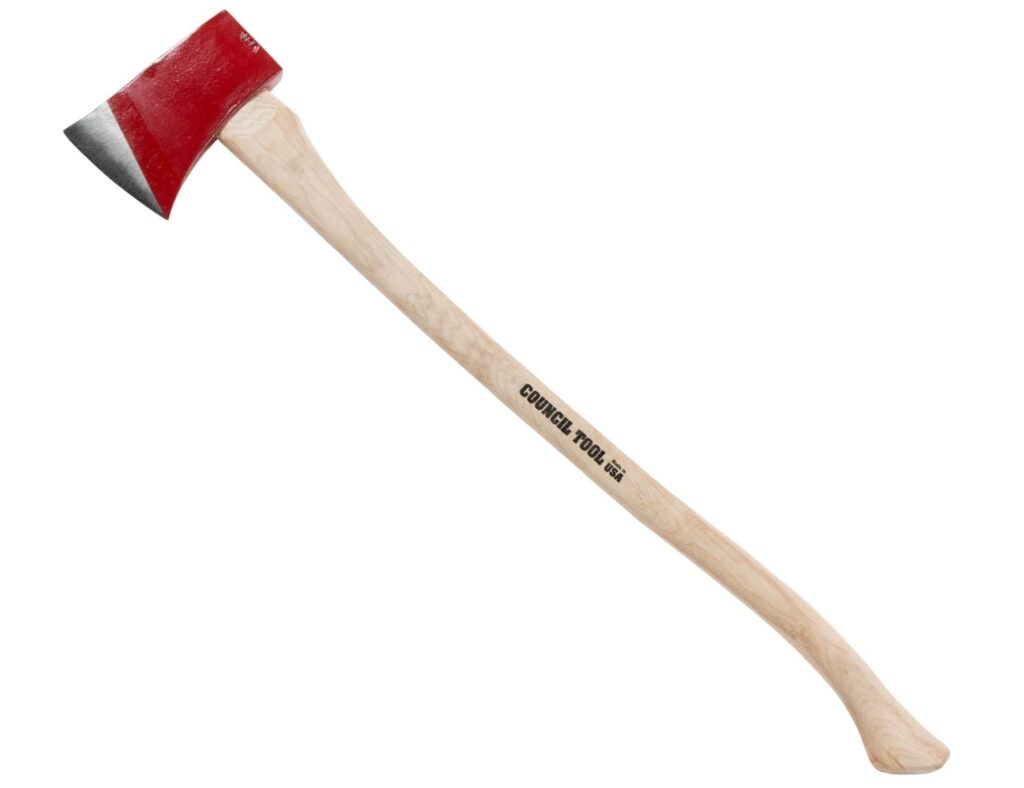
Axe heads with the Dayton design are named after the city of Dayton, Ohio. These are full-sized felling axes that were (and possibly still are) used to fell hardwood trees for use in construction. Unlike Hudson Bay axe heads, which can weigh up to 2 pounds, Dayton axe heads often weigh between 3.5 and 5 pounds.
21. Michigan Axe: ( Types of Axes )
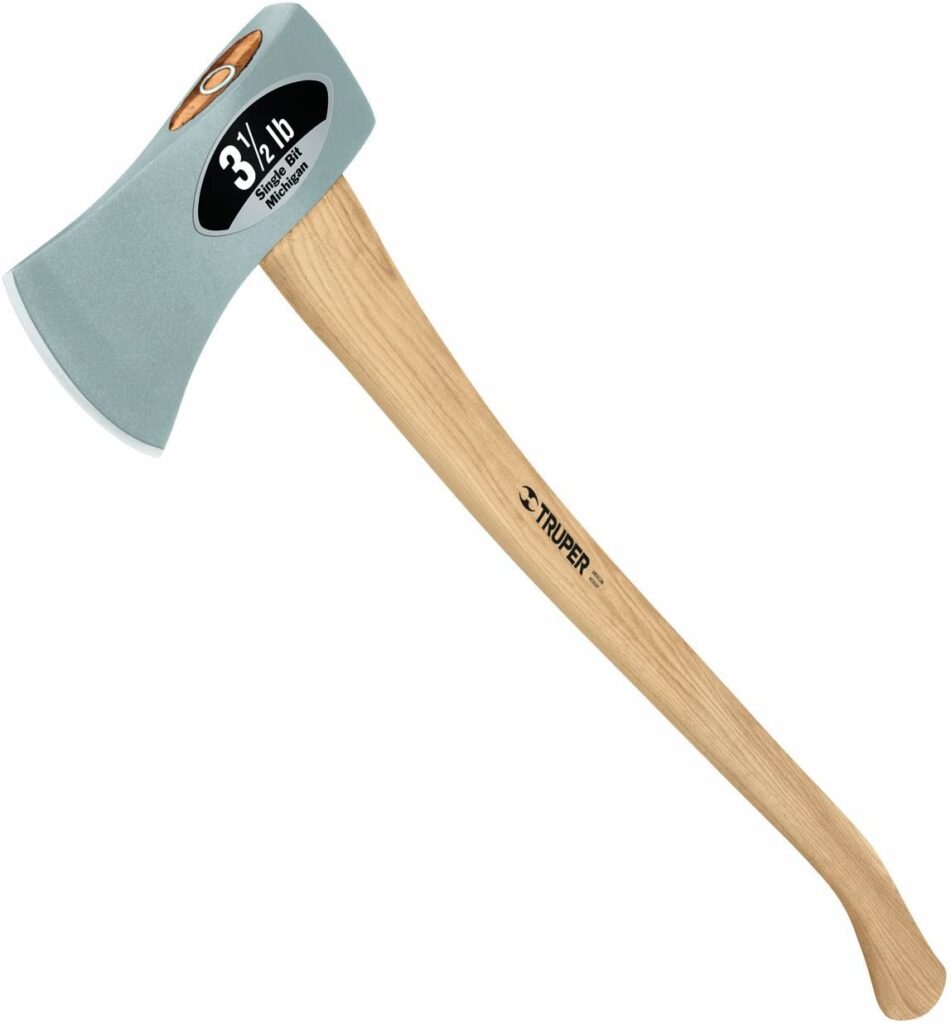
The Michigan hatchet head design showed up in the 1860’s in Michigan, where pilgrims logged huge eastern white pine trees. The Michigan hatchet design is like the Dayton design, however with a more adjusted survey end and thicker (or fatter) cheeks that made it reasonable to use as a parting hatchet as well as felling. Put as far as calculation, a Michigan hatchet has a more raised shape instead of the Dayton hatchet’s more sunken structure.
Michigan axes had wide bits (excellent for biting deeper into wood) and slightly rounded toe and heel or top and bottom points of the cutting edge, which helped keep the cutting edge from chipping when swung into the sometimes frozen and equally knotty pine wood found across the state.
22. Jersey Axe: ( Types of Axes )
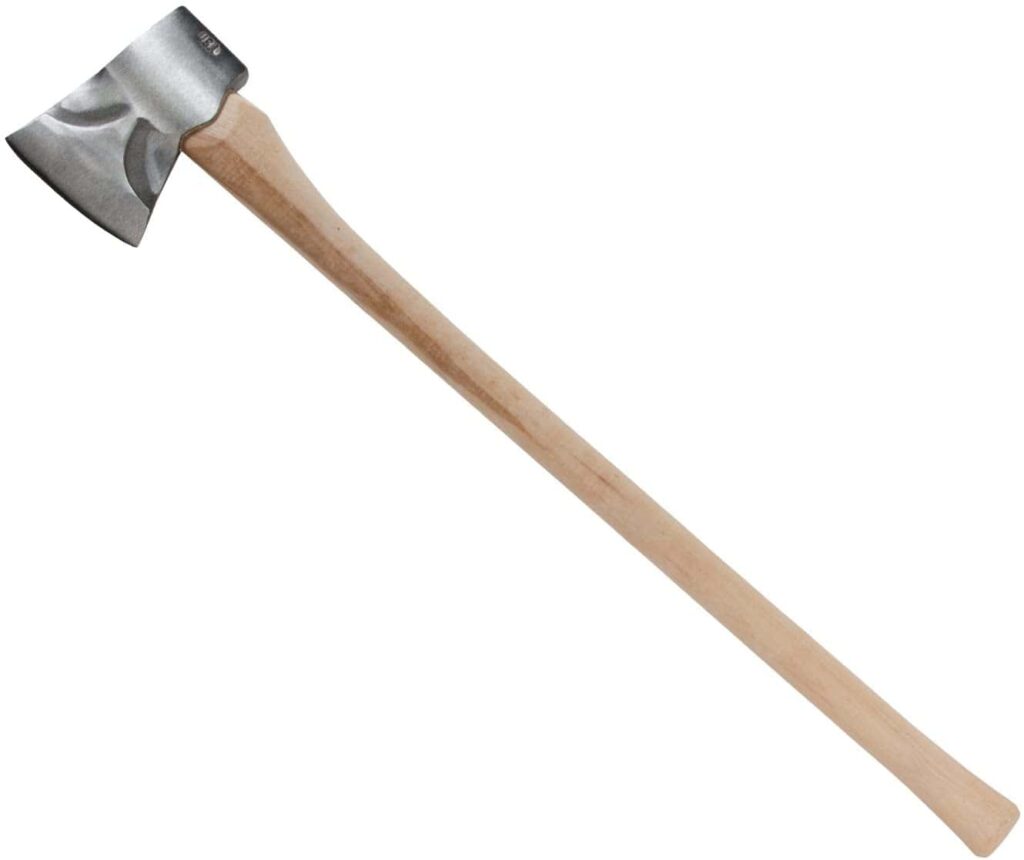
A “lug” is a feature seen on Jersey axes. This is a downward-facing extension of the axe head’s cheek at an oblique angle. This enhances stability by increasing contact between the axe head and the handle. The Jersey axe pattern, like the Michigan axe pattern, is still widely used in current axes, which speaks to its usefulness.
Jersey design tomahawks additionally frequently had slopes produced or crushed into the cheeks to diminish grating and the hatchet stalling out in wood while kicking (cutting up into segments) felled trees or parting wood.
23. Swamper’s Axe: ( Types of Axes )
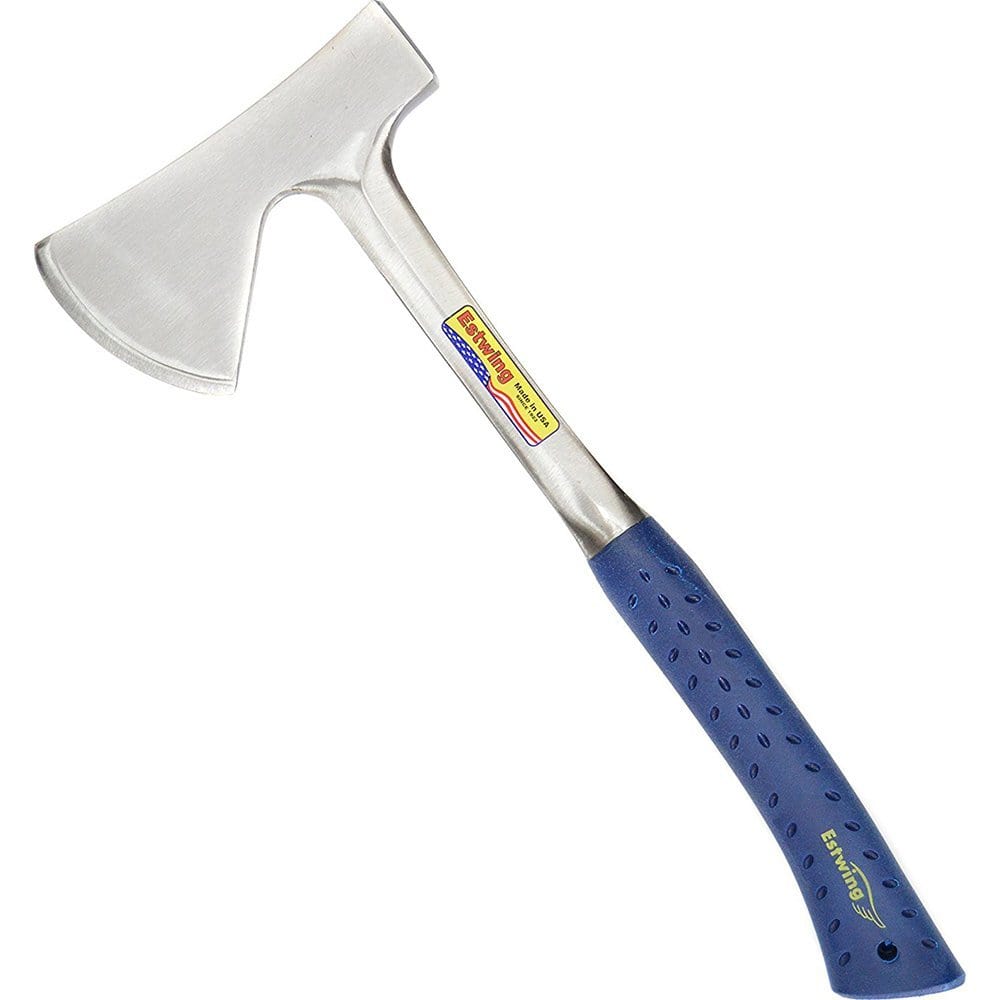
Swamper’s axe were utilized by the ones who limbed a tree after it had been felled and afterward slice it up into segments to make movable logs. Swampers cleared brush before fellers got to work and made logging streets and trails in the woods. Swamper’s tomahawks were intended for limbing and kicking a tree, and working quick was significant. That is the reason the pieces on swamper’s tomahawks were more extensive and more adjusted than on comparable measured felling tomahawks – to buck trees into logs as quick as could be expected and lessen the danger of chipping or breakage in the event that they hit a frightful bunch or on the other hand assuming they were working with frozen wood.


